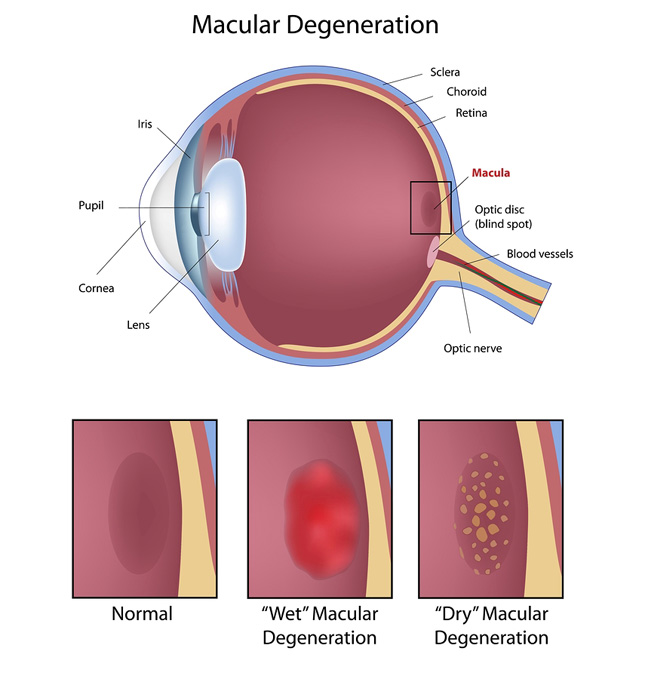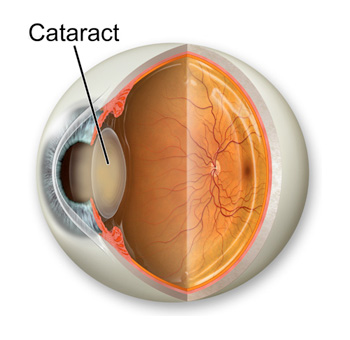Eye Conditions
The following eye conditions are the most common we treat at Dapto Optical.
Contact us today to arrange your next visit!
Diabetes affects around 500,000 Australians. Many diabetics do not have any more vision problems than non-diabetics. However nearly 70 per cent of diabetics within 15 years of diagnosis have a related ocular issue. The most significant of these diabetes effects is Diabetic Retinopathy. This is detectable by your optometrist.
People who suffer from Diabetes are advised to have, at least, yearly eye examinations, or more. These annual examinations involve a full vision check, dilating drops to allow the best quality examination of your crystalline lens and retina; and Digital Retinal Photography (DRP) to comprehensively assess for any presence of complications.
Changes that Diabetes can cause in the eyes are:
Changes in Prescription/Vision:
As your Blood Glucose Level changes the refractive (light bending) properties of the crystalline lens in your eye can change. This can potentially lead to large changes in your glasses prescription.
Sometimes these changes in your prescription may occur even before you are symptomatic or have been diagnosed with diabetes. Sometimes, we will suggest that a patient should see their GP to check their sugar levels if we measure an unusual change in your prescription.
These changes can sometimes reverse when your sugar levels have stabilised.
Cataract
Diabetics often will develop cataract earlier than thiose who are not diabetic, in addition, these cataracts can worsen more quickly and thus require surgical intervention more promptly.
Diabetic retinopathy
Diabetic Retinopathy may occur after diabetes has been present for some years. These changes occur at the back of the eye in the retina. The are three possible variations of this condition, background (sometimes called simple) retinopathy, proliferative retinopathy and macular oedema.
Background retinopathy
This form rarely causes any vision to be lost and therefore does not require any treatment other than regular eye examinations by your optometrist. However, this may require visits more than once a year. We will notify your General Practitioner of these changes, as they can be an indicator that your current level of diabetes control is not adequate.
Proliferative retinopathy
This form is more serious and requires early treatment to prevent serious vision loss. We can recognise the signs that the condition might develop or detect it in its early stages. Once proliferative retinopathy is diagnosed, you will be referred to an eye surgeon for further evaluation and treatment. Treatment of this condition has a better chance of success if it is applied early.
Diabetic Macular Oedema:
This form of retinal change associated with Diabetes involves fluid build up within the layers of the retina. This can be very difficult to detect in its early stages. Patients who have other Diabetic Retinopathy near to the macula, are insulin dependent or have been diabetic for a long period are more likely to develop Diabetic Macular Oedema.
Learn more about Diabetes at http://www.australiandiabetescouncil.com/
Glaucoma is a complicated disease in which damage to the optic nerve leads to progressive, irreversible vision loss. Glaucoma is the second leading cause of blindness. Glaucoma occurs when the nerve cells that transmit information from the eye to the brain become damaged. It can be associated with a build-up of pressure in the eye. Glaucoma is largely symptom-free until permanent damage has occurred, and if untreated can cause blindness. An optometrist can diagnose it in its early stages and refer the patient for treatment. Glaucoma usually affects over 40s and tends to be hereditary.
Complete and thorough assessment for Glaucoma includes Intra Ocular Pressure measurement, Microscopic examination of the optic nerve and Visual Fields Testing. See our consultations page.
Glaucoma is progressive and can be quite difficult to diagnose in its early stages. The above tests are usually performed on a regular basis to help us to detect changes as early as possible such that appropriate referral and treatment can be instigated.

More information is available at: www.glaucoma.org
Macular Degeneration (MD) is the name given to a group of degenerative diseases of the retina that cause progressive, painless loss of central vision, affecting the ability to see fine detail, drive, read and recognise faces.
Although there is no cure for MD, there are treatment options that can slow down its progression, depending on the stage and type of the disease (wet, dry, and other forms). The earlier the disease is detected, the more vision you are likely to retain.
There are different types of MD and the type of MD you have influences what treatment options are available. In MD it is critical to have regular reviews and also some form of retinal imaging in order to gauge any progression.

More information about MD can be found at : www.mdfoundation.com.au
Cataracts are a cloudiness that develops in the normally clear lens of the eye. They are particularly common in people over 65 and get progressively worse. They can be fixed surgically when required.
The most frequent symptoms are blurred or dimmed vision and increased problems with glare. Cataract generally occur with advancing age but may occur at birth or any stage in life. Cataract is usually more advanced in one eye and may be slowly progressive over a number of years. Initially cataract causes very little problem.
Cataract cannot be cured by medicines, eye drops, diet or exercises and can only be removed by a surgical operation. Some cataracts develop slowly and may never require surgical removal and their effects are managed by more frequent alteration to your spectacles for prescription and tinting of lenses.
If surgery is required, the most common surgery removes the cataract lens and replaces it with an intraocular lens implant ( IOL ). This is usually performed under local anaesthesia but can be done under a general anaesthetic if a case requires. Age is no handicap, however good general physical condition is desirable. It is usual to have spectacles after the eye has healed to make the most of your vision and in many cases one’s dependence on spectacles is reduced. The prognosis is very good, however as with all surgery there are some unusual complications that may occur and this can be discussed with the eye surgeon.

Dry Eye is a very common problem, particularly among older people and females. More correctly described as ear film dysfunction, some people do not produce enough tears to keep the eye wet and comfortable and others have poor quality tear film which leads to the same result. Stinging, burning, scratchiness, foreign body sensation, photosensitivity, stringy mucus, and excess irritation from smoke or dust are common symptoms. It can also be associated with unstable vision between blinks.
Sometimes, a wet eye is actually a dry eye. Increased tearing may be a symptom of dry eyes. If your tear secretion is below the normal quality or quantity, excess tears are produced by the lacrimal gland. This occurs in response to the irritation caused by the surface of the eye lacking the moisturising effect that your tears provide. Even though the eyes are basically dry, you can appear as if you are crying, particularly in dry air or windy environments.
If you have tear film dysfunction some of the following options may be discussed to try to manage the condition as well as possible:
- Artificial Tears – We use and Recommend Thera Tears and Thera Tears Gel
- Protection from the Elements – Glasses and sunglasses
- Punctal Plugs – to hold the tears in your eyes more Effectively
- Dietary Supplements
- Warm compresses and Lid hygiene
Shortsightedness (myopia) makes it difficult to sea objects in the distance. This is simple to correct with glasses or contact lenses.
Longsightedness (hyperopia) makes it difficult to see objects that are close to you. This is easily corrected with glasses or contact lenses.
Astigmatism is a focusing error caused by a variation in the shape of the front of your eye. Again, this can be corrected with glasses or contact lenses.
Presbyopia makes it difficult specifically at reading distance. Presbyopia usually developes between the ages of 40 and 65 and is a normal part of ageing. Glasses or contact lenses can restore normal vision.
Amblyopia is sometimes known as ‘lazy eye’ and means that the vision from one eye is not sending effective messages to the brain. Untreated amblyopia in children can lead to permanent vision problems. The earlier that it is detected, the easier it is to treat.
